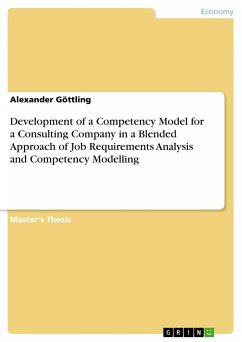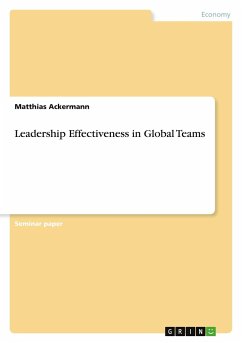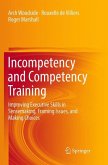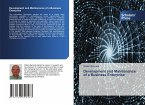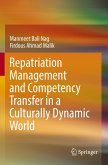Master's Thesis from the year 2010 in the subject Leadership and Human Resources - Miscellaneous, grade: 1,9, Durham University (Durham Business School), language: English, abstract: Research shows that high-performing people are critical for high-performing organisations. Especially for professional service firms, such as management consultancies, people can be seen as the critical success factor. The competencies of their employees assure the long-term competitiveness of consulting firms. Thus, recruiting and selection as well as personnel devel-opment are strategically crucial for consulting firms. In other words: a strategic competency management, which is based on critical-to-success criteria, have to be in focus within this in-dustry. But how can be distinguished between high-performing and non-high-performing peo-ple? What characterises a successful consultant? What are knowledge, skills, and abilities, which determine job performance within the consulting industry? The research paper at hand tries to answer these questions with the help of a concrete example.Over the last decades two mainstreams to answer this type of practical as well as scientifically relevant questions emerged: the requirements analysis approach, which is more quantitative and focuses on task related requirements, and the competency modelling approach, which is more related to individual characteristics and which attempts to describe how the tasks are mastered. With a blended approach, this study tries to integrate the advantages of both and to identify, what are typical tasks of consultants, which behaviour differentiates high-performing from less successful consultants, which competencies enable high-performing job holders, and which requirements can be derived from that?In the first instance a preliminary study in a European consulting firm aims to explore thy typi-cal duties and tasks at each of five career levels using the Critical Incident Technique according to Flanagan.Then, a survey amongst all job holders in this consulting firm shall reassess the findings of the preliminary study. Finally a scientifically substantiated and at the same time implementable model with competency profiles for each career level is drawn, whilst limita-tions of this approach and further recommendations for implementation are shown.
Hinweis: Dieser Artikel kann nur an eine deutsche Lieferadresse ausgeliefert werden.
Hinweis: Dieser Artikel kann nur an eine deutsche Lieferadresse ausgeliefert werden.

